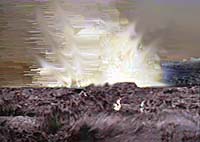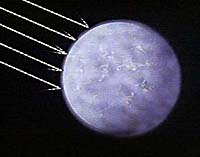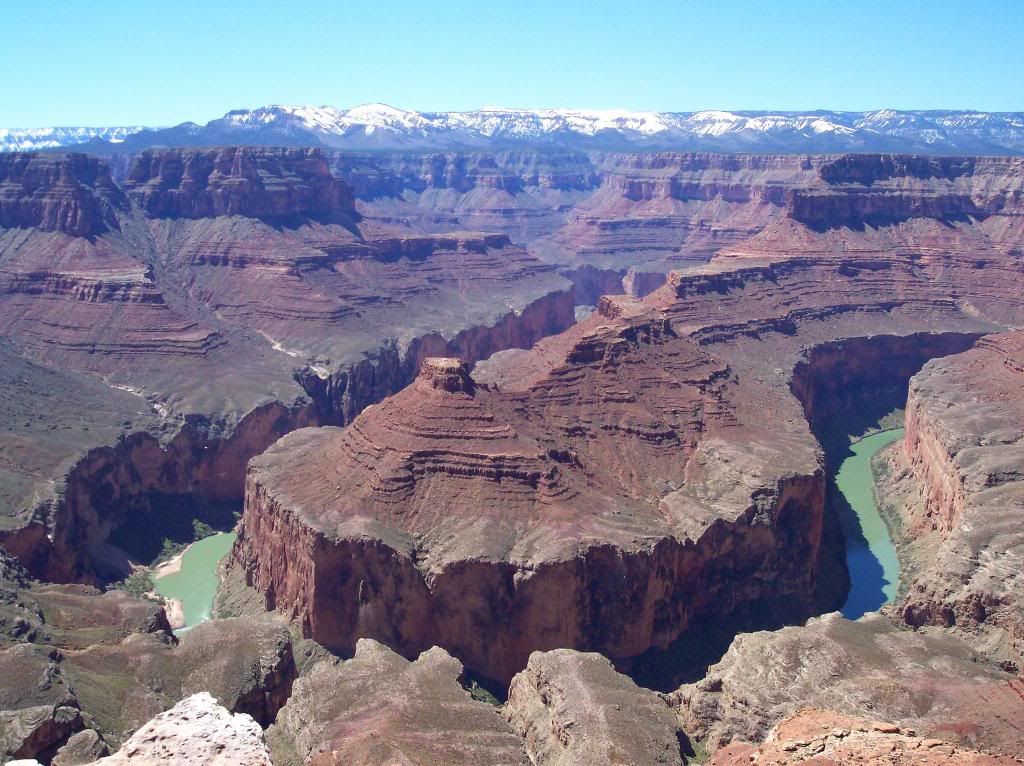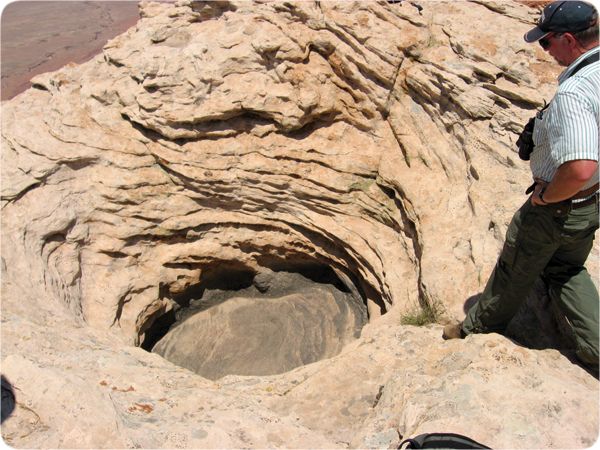Navigation
Install the app
How to install the app on iOS
Follow along with the video below to see how to install our site as a web app on your home screen.
Note: This feature may not be available in some browsers.
More options
Style variation

-

-

-

-

Desire to be a vessel of honor unto the Lord Jesus Christ?
Join Hidden in Him and For His Glory for discussions on how
https://christianforums.net/threads/become-a-vessel-of-honor-part-2.112306/
You are using an out of date browser. It may not display this or other websites correctly.
You should upgrade or use an alternative browser.
You should upgrade or use an alternative browser.
[ Young Earth ] Noah's Flood
- Thread starter stovebolts
- Start date
jasoncran
Member
- May 17, 2009
- 38,271
- 185
ah i dont know. i would like to hear jeffs comments on the fifty gates of the secrets of the torah and ramban also mentioned that noah did the torah in this manner with the animals. i dont understand thatCould well be some of both... Moses could have had enough stories to fill 20 books.. God sorted them out for him... God could have written them as He did the first 10...
Ya can't get nothing past God ya know...
westtexas
Member
- Jul 6, 2009
- 1,263
- 20
I thought this was a pretty interesting article. Theres an explanation of a canyon which was formed during the Mt. St. Helens eruption in the 1980"s which the author equates quite well with the forming of the Grand Canyon. What I found most interesting was the map of the earth's fault lines. Take a look how they mirror perfectly the land masses of the continents. The oceans sank, the land masses heaved and the 'fountains of the deep" burst forth. Theres also a good bit of scripture in the article. It's fairly long but I thought it was well worth the time spent reading it.
Westtexas
www.exchangedlife.com/Sermons/gen/the_flood.shtml
Westtexas
www.exchangedlife.com/Sermons/gen/the_flood.shtml
Last edited by a moderator:
Lewis
Member
- Aug 5, 2005
- 15,483
- 621
In telling us about the world-changing Flood in the days of Noah, the Bible gives us much information about where the waters came from and where they went. The sources of the water are given in Genesis 7:11 as “the fountains of the great deep†and the “windows of heaven.†The Fountains of the Great Deep
The “fountains of the great deep†are mentioned before the “windows of heaven,†indicating either relative importance or the order of events.
What are the “fountains of the great deep?†This phrase is used only in Genesis 7:11. “Fountains of the deep†is used in Genesis 8:2, where it clearly refers to the same thing, and Proverbs 8:28, where the precise meaning is not clear. “The great deep†is used three other times: Isaiah 51:10, where it clearly refers to the ocean; Amos 7:4, where God's fire of judgment is said to dry up the great deep, probably the oceans; and Psalm 36:6 where it is used metaphorically of the depth of God's justice/judgment. “The deep†is used more often, and usually refers to the oceans (e.g., Genesis 1:2; Job 38:30, 41:32; Psalm 42:7, 104:6; Isaiah 51:10, 63:13; Ezekiel 26:19; Jonah 2:3), but sometimes to subterranean sources of water (Ezekiel 31:4, 15). The Hebrew word (mayan) translated “fountains†means “fountain, spring, well.â€[1]
So, the “fountains of the great deep†are probably oceanic or possibly subterranean sources of water. In the context of the flood account, it could mean both.
 “Fountains of the great deep†scene from The World That Perished
“Fountains of the great deep†scene from The World That Perished
If the fountains of the great deep were the major source of the waters, then they must have been a huge source of water. Some have suggested that when God made the dry land appear from under the waters on the third day of creation, some of the water that covered the earth became trapped underneath and within the dry land.[2]
Genesis 7:11 says that on the day the flood began, there was a “breaking up†of the fountains, which implies a release of the water, possibly through large fissures in the ground or in the sea floor. The waters that had been held back burst forth with catastrophic consequences.
There are many volcanic rocks interspersed between the fossil layers in the rock record—layers that were obviously deposited during Noah's flood. So it is quite plausible that these fountains of the great deep involved a series of volcanic eruptions with prodigious amounts of water bursting up through the ground. It is interesting that up to 70 percent or more of what comes out of volcanoes today is water, often in the form of steam.
In their catastrophic plate tectonics model for the flood, Austin et al. have proposed that at the onset of the flood, the ocean floor rapidly lifted up to 6,500 feet (2,000 meters) due to an increase in temperature as horizontal movement of the tectonic plates accelerated.[3] This would spill the seawater onto the land and cause massive flooding—perhaps what is aptly described as the breaking up of the “fountains of the great deep.â€
 During the Flood, the world was deluged in 40 days of rain. But this was not the major source of the Flood waters. (Scene from the award-winning Christian video, The World that Perished.)
During the Flood, the world was deluged in 40 days of rain. But this was not the major source of the Flood waters. (Scene from the award-winning Christian video, The World that Perished.)
The windows of heaven
The other source of the waters for Noah's flood was “the windows of heaven.†Genesis 7:12 says that it rained for 40 days and 40 nights continuously.
Genesis 2:5 tells us that there was no rain before man was created. Some have suggested that there was no rainfall anywhere on the earth until the time of the flood. However, the Bible does not actually say this, so we should not be dogmatic.[4]
Some have argued that God's use of the rainbow as the sign of His covenant with Noah (Genesis 9:12-17) suggests that there were no rainbows, and therefore no clouds or rain, before the flood. However, if rainbows (and clouds) existed before the flood, this would not be the only time God used an existing thing as a special “new†sign of a covenant (e.g., bread and wine in the Lord's Supper).
 It is difficult to envisage a pre-flood water cycle without clouds and rain, as the sun's heat, even in that era, must have evaporated large volumes of surface waters which would have to eventually condense back into liquid water. And droplets of liquid water form clouds from which we get rain.
It is difficult to envisage a pre-flood water cycle without clouds and rain, as the sun's heat, even in that era, must have evaporated large volumes of surface waters which would have to eventually condense back into liquid water. And droplets of liquid water form clouds from which we get rain.
The expression “windows of heaven†is used twice in reference to the flood (Genesis 7:11, 8:2). It is used only three times elsewhere in the Old Testament: twice in 2 Kings 7:2 and 19, referring to God's miraculous intervention in sending rain, and once in Malachi 3:10, where the phrase is used again of God intervening to pour out abundant blessings on his people. Clearly, in Genesis the expression suggests the extraordinary nature of the rainfall attending the flood. It is not a term applied to ordinary rainfall.
What about “the waters above�
We are told in Genesis 1:6-8 that on the second day of creation God divided the waters that were on the earth from the waters that He placed above the earth when He made a “firmament†(Hebrew: raqiya, meaning “expanseâ€) between those waters.[5] Many have concluded that this “expanse†was the atmosphere, because God placed the birds in the expanse, suggesting that the expanse includes the atmosphere where the birds fly. This would put these waters above the atmosphere.
However, Genesis 1:20, speaking of the creation of the birds, says (literally) “let the birds fly above the ground across the face of the expanse of the heavens.â€[6] This at least allows that “the expanse†may include the space beyond the atmosphere.
Dr. Russell Humphreys has argued that since Genesis 1:17 tells us that God put the sun, moon, and stars also “in the expanse of the heaven†then the expanse must at least include interstellar space, and thus the waters above the expanse of Genesis 1:7 would be beyond the stars at the edge of the universe.[7]
However, prepositions (in, under, above, etc.) are somewhat flexible in Hebrew, as well as English. A submarine can be spoken of as both under and in the sea. Likewise, the waters could be above the expanse and in the expanse, so we should be careful no to draw too much from these expressions.
So what were these “waters above� Some have said that they are siply the clouds. Others thought of them as a “water vapor canopy,†implying a blanket of water vapor surrounding the earth.
The “fountains of the great deep†are mentioned before the “windows of heaven,†indicating either relative importance or the order of events.
What are the “fountains of the great deep?†This phrase is used only in Genesis 7:11. “Fountains of the deep†is used in Genesis 8:2, where it clearly refers to the same thing, and Proverbs 8:28, where the precise meaning is not clear. “The great deep†is used three other times: Isaiah 51:10, where it clearly refers to the ocean; Amos 7:4, where God's fire of judgment is said to dry up the great deep, probably the oceans; and Psalm 36:6 where it is used metaphorically of the depth of God's justice/judgment. “The deep†is used more often, and usually refers to the oceans (e.g., Genesis 1:2; Job 38:30, 41:32; Psalm 42:7, 104:6; Isaiah 51:10, 63:13; Ezekiel 26:19; Jonah 2:3), but sometimes to subterranean sources of water (Ezekiel 31:4, 15). The Hebrew word (mayan) translated “fountains†means “fountain, spring, well.â€[1]
So, the “fountains of the great deep†are probably oceanic or possibly subterranean sources of water. In the context of the flood account, it could mean both.
 “Fountains of the great deep†scene from The World That Perished
“Fountains of the great deep†scene from The World That PerishedIf the fountains of the great deep were the major source of the waters, then they must have been a huge source of water. Some have suggested that when God made the dry land appear from under the waters on the third day of creation, some of the water that covered the earth became trapped underneath and within the dry land.[2]
Genesis 7:11 says that on the day the flood began, there was a “breaking up†of the fountains, which implies a release of the water, possibly through large fissures in the ground or in the sea floor. The waters that had been held back burst forth with catastrophic consequences.
There are many volcanic rocks interspersed between the fossil layers in the rock record—layers that were obviously deposited during Noah's flood. So it is quite plausible that these fountains of the great deep involved a series of volcanic eruptions with prodigious amounts of water bursting up through the ground. It is interesting that up to 70 percent or more of what comes out of volcanoes today is water, often in the form of steam.
In their catastrophic plate tectonics model for the flood, Austin et al. have proposed that at the onset of the flood, the ocean floor rapidly lifted up to 6,500 feet (2,000 meters) due to an increase in temperature as horizontal movement of the tectonic plates accelerated.[3] This would spill the seawater onto the land and cause massive flooding—perhaps what is aptly described as the breaking up of the “fountains of the great deep.â€
 During the Flood, the world was deluged in 40 days of rain. But this was not the major source of the Flood waters. (Scene from the award-winning Christian video, The World that Perished.)
During the Flood, the world was deluged in 40 days of rain. But this was not the major source of the Flood waters. (Scene from the award-winning Christian video, The World that Perished.)The windows of heaven
The other source of the waters for Noah's flood was “the windows of heaven.†Genesis 7:12 says that it rained for 40 days and 40 nights continuously.
Genesis 2:5 tells us that there was no rain before man was created. Some have suggested that there was no rainfall anywhere on the earth until the time of the flood. However, the Bible does not actually say this, so we should not be dogmatic.[4]
Some have argued that God's use of the rainbow as the sign of His covenant with Noah (Genesis 9:12-17) suggests that there were no rainbows, and therefore no clouds or rain, before the flood. However, if rainbows (and clouds) existed before the flood, this would not be the only time God used an existing thing as a special “new†sign of a covenant (e.g., bread and wine in the Lord's Supper).
 It is difficult to envisage a pre-flood water cycle without clouds and rain, as the sun's heat, even in that era, must have evaporated large volumes of surface waters which would have to eventually condense back into liquid water. And droplets of liquid water form clouds from which we get rain.
It is difficult to envisage a pre-flood water cycle without clouds and rain, as the sun's heat, even in that era, must have evaporated large volumes of surface waters which would have to eventually condense back into liquid water. And droplets of liquid water form clouds from which we get rain.The expression “windows of heaven†is used twice in reference to the flood (Genesis 7:11, 8:2). It is used only three times elsewhere in the Old Testament: twice in 2 Kings 7:2 and 19, referring to God's miraculous intervention in sending rain, and once in Malachi 3:10, where the phrase is used again of God intervening to pour out abundant blessings on his people. Clearly, in Genesis the expression suggests the extraordinary nature of the rainfall attending the flood. It is not a term applied to ordinary rainfall.
What about “the waters above�
We are told in Genesis 1:6-8 that on the second day of creation God divided the waters that were on the earth from the waters that He placed above the earth when He made a “firmament†(Hebrew: raqiya, meaning “expanseâ€) between those waters.[5] Many have concluded that this “expanse†was the atmosphere, because God placed the birds in the expanse, suggesting that the expanse includes the atmosphere where the birds fly. This would put these waters above the atmosphere.
However, Genesis 1:20, speaking of the creation of the birds, says (literally) “let the birds fly above the ground across the face of the expanse of the heavens.â€[6] This at least allows that “the expanse†may include the space beyond the atmosphere.
Dr. Russell Humphreys has argued that since Genesis 1:17 tells us that God put the sun, moon, and stars also “in the expanse of the heaven†then the expanse must at least include interstellar space, and thus the waters above the expanse of Genesis 1:7 would be beyond the stars at the edge of the universe.[7]
However, prepositions (in, under, above, etc.) are somewhat flexible in Hebrew, as well as English. A submarine can be spoken of as both under and in the sea. Likewise, the waters could be above the expanse and in the expanse, so we should be careful no to draw too much from these expressions.
So what were these “waters above� Some have said that they are siply the clouds. Others thought of them as a “water vapor canopy,†implying a blanket of water vapor surrounding the earth.
Lewis
Member
- Aug 5, 2005
- 15,483
- 621

A water vapor canopy?
Dr. Joseph Dillow did much research into the idea of a blanket of water vapor surrounding the earth before the flood.[8] In a modification of the canopy theory, Dr. Larry Vardiman suggested that much of the “waters above†could have been stored in small ice particles distributed in equatorial rings around the earth similar to those around Venus.[9]
The Genesis 7:11 reference to the windows of heaven being opened has been interpreted as the collapse of such a water vapor canopy, which somehow became unstable and fell as rain. Volcanic eruptions associated with the breaking up of the fountains of the great deep could have thrown dust into the water vapor canopy, causing the water vapor to nucleate on the dust particles and make rain.
Dillow, Vardiman, and others have suggested that the vapor canopy caused a greenhouse effect before the Flood with a pleasant sub tropical-to-temperate climate all around the globe, even at the poles where today there is ice. This would have caused the growth of lush vegetation on the land all around the globe. The discovery of coal seams in Antarctica containing vegetation that is not now found growing at the poles, but which obviously grew under warmer conditions, was taken as support for these ideas.[10]
 A vapor canopy would also affect the global wind systems. Also, the mountains were almost certainly not as high before the flood as they are today, as we shall see. In today's world, the major winds and high mountain ranges are a very important part of the water cycle that brings rain to the continents. Before the flood, however, these factors would have caused the weather systems to be different.
A vapor canopy would also affect the global wind systems. Also, the mountains were almost certainly not as high before the flood as they are today, as we shall see. In today's world, the major winds and high mountain ranges are a very important part of the water cycle that brings rain to the continents. Before the flood, however, these factors would have caused the weather systems to be different.Those interested in studying this further should consult Dillow's and Vardiman's works.
A major problem with the canopy theory
Vardiman[11] recognized a major difficulty with the canopy theory. The best canopy model still gives an intolerably high temperature at the surface of the earth.
Rush and Vardiman have attempted a solution,[12] but found that they had to drastically reduce the amount of water vapor in the canopy from a rain equivalent of 40 feet (12 meters) to only 20 inches (.5 meters). Further modeling suggested that a maximum of 2 meters (6.5 feet) of water could be held in such a canopy, even if all relevant factors were adjusted to the best possible values to maximize the amount of water stored.[13] Such a reduced canopy would not significantly contribute to the 40 days and nights of rain at the beginning of the flood.
Many creation-scientists are now either abandoning the water vapor canopy model[14] or no longer see any need for such a concept, particularly if other reasonable mechanisms could have supplied the rain.[15] In the catastrophic plate tectonics model for the flood,[16] volcanic activity associated with the breaking up of the pre-flood ocean floor would have created a linear geyser (like a wall) of superheated steam from the ocean, causing intense global rain.
Nevertheless, whatever the source or mechanism, the scriptural statement about the windows of heaven opening is an apt description of global torrential rain.
A vapor canopy holding more than 7 feet (two meters) of rain would cause the earth's surface to be intolerably hot, so a vapor canopy could not have been a significant source of the flood waters.

Footnotes
- Strong's Concordance
- Evidence is mounting that there is still a huge amount of water stored deep in the earth in crystal lattices of minerals, which is possible because of the immense pressure. See L. Bergeron, “Deep waters,†New Scientist, 1997, 155(2097):22-26:“You have oceans and oceans of water stored in the transition zone. It's sopping wet.â€
- S.A. Austin, J.R. Baumgardner, D.R. Humphreys, A.A. Snelling, L. Vardiman, and K.P. Wise, “Catastrophic Plate Tectonics: A Global Flood Model of Earth History,†Proc. Third ICC, 1994, pp. 609-621.
- Some have claimed that because the people scoffed at Noah's warnings of a coming flood, that they must not have seen rain. But people today have seen lots of rain and floods, and many still scoff at the global flood. Genesis 2:5 says there was no rain yet upon the earth, but whether or not it rained after that in the pre-flood world is not stated.
- In trying to disparage the Bible, some skeptics claim that the raqiya describes a solid dome and that the ancient Hebrews believed in a flat earth with a slotted dome over it. Such ideas are not in the Bible or raqiya. See J.P. Holding, “Is the Raqiya a Solid Dome?†Equivocal language in the cosmology of Genesis 1 and the Old Testament: a response to Paul H. Seely, CEN Technical Journal, 1999, 13(2):44-51.
- H.C. Leupold, Exposition of Genesis, Vol. 1 (Grand Rapids, MI: Baker Book House, 1942), p. 78.
- D.R. Humphreys, “A Biblical Basis for Creationist Cosmology,†(Proc. Third ICC, Pittsburgh, PA, 1994, pp. 255-266).
- J.C. Dillow, The Waters Above (Chicago, IL: Moody Press, 1981).
- L. Vardiman, “The Sky Has Fallenâ€, Proc. First ICC, 1986, 1:113-119.
- Movement of tectonic plates could also explain the polar occurrence of such warm-climate plant remains.
- Vardiman, “The Sky Has Fallen,†pp. 116, 119.
- D.E. Rush and L. Vardiman, “Pre-flood Vapor Canopy Radiative Temperature Profiles,†Proc. Fourth ICC, Pittsburgh, PA, 1990, 2:231-245.
- L. Vardiman and K. Bousselot, “Sensitivity Studies on Vapor Canopy Temperature Profiles,†Proc. Fourth ICC, 1998, pp. 607-618.
- Psalm 148:4 seems to speak against the canopy theory. Written after the flood, this refers to “waters above the heavens†still existing, so this cannot mean a vapor canopy that collapsed at the flood. Calvin, Leupold, Keil, and Delitzsch all wrote of “the waters above†as merely being clouds.
- Of course, we may never arrive at a correct understanding of exactly how the flood occurred, but that does not change the fact that it did occur.
- Austin et al., Catastrophic Plate Tectonics…
Man-After-God
Member
- Sep 15, 2012
- 65
- 0
This is an awesome topic!
I like Walt Brown's video on YouTube, about Hydro plate theory.
http://www.youtube.com/watch?v=zKO-vTwYCo8
I think God is so amazing and so awesome that I can't help but stand in awe of His glory!
Thanks again for such a great topic, I love Young Earth discussions.

I like Walt Brown's video on YouTube, about Hydro plate theory.

http://www.youtube.com/watch?v=zKO-vTwYCo8
I think God is so amazing and so awesome that I can't help but stand in awe of His glory!
Thanks again for such a great topic, I love Young Earth discussions.

- Nov 4, 2004
- 18,914
- 7,286
- Thread starter
- #31
Glad your here Man of God! Hope to increase our dialog and expand this forum 

Man-After-God
Member
- Sep 15, 2012
- 65
- 0
Thanks! :nod
You guys seem to know a lot about the topic of "the flood", and I am definatly eager to learn as much as I possibly can.
A question I have, is; do you think that the earth was one land mass? Also was it during the flood that is was "divided" or during the time in the verses below?
Thanks!
http://www.biblegateway.com/quicksearch/?quicksearch=the+earth+was+divided&qs_version=KJV
You guys seem to know a lot about the topic of "the flood", and I am definatly eager to learn as much as I possibly can.
A question I have, is; do you think that the earth was one land mass? Also was it during the flood that is was "divided" or during the time in the verses below?
Thanks!
- Genesis 10:25
And unto Eber were born two sons: the name of one was Peleg; for in his days was the earth divided; and his brother's name was Joktan. - 1 Chronicles 1:19
And unto Eber were born two sons: the name of the one was Peleg; because in his days the earth was divided: and his brother's name was Joktan.
(KJV)
http://www.biblegateway.com/quicksearch/?quicksearch=the+earth+was+divided&qs_version=KJV
- Nov 4, 2004
- 18,914
- 7,286
- Thread starter
- #33
Thanks! :nod
You guys seem to know a lot about the topic of "the flood", and I am definatly eager to learn as much as I possibly can.
A question I have, is; do you think that the earth was one land mass? Also was it during the flood that is was "divided" or during the time in the verses below?
Thanks!
Retrieved from:
- Genesis 10:25
And unto Eber were born two sons: the name of one was Peleg; for in his days was the earth divided; and his brother's name was Joktan.- 1 Chronicles 1:19
And unto Eber were born two sons: the name of the one was Peleg; because in his days the earth was divided: and his brother's name was Joktan.
(KJV)
http://www.biblegateway.com/quicksearch/?quicksearch=the+earth+was+divided&qs_version=KJV
Nice passages! I never caught that before!
Yes, I believe that the earth was one land mass before the flood. I'll try and pull some stuff together this afternoon. Basically, scriptures say that the springs from the deep are what flooded the earth, not just the 40 days of rain. It has been shown that fresh water does exist below the earth's surface. One model of the flood that I've seen explains it as when the land started shifting and pulling apart, it released the water that was under the ocean which flooded the earth.
When the water was removed, it left empty caverns under the ocean and the weight of the ocean caused it to collapse. When this occurred, the water on the land ran back into the oceans causing the waters to recede from the land.
There is actually a lot of evidence for this and it's based on good science and fits perfectly with the biblical account.
Man-After-God
Member
- Sep 15, 2012
- 65
- 0
Thanks! Yah these verses always made me wonder about the earth being divided, after being a whole landmass at one point in time.:eeeekkk
thightower
Member
- Sep 20, 2012
- 207
- 0
Walt Brown explained the fountains of the deep pretty well. If you look at a globe, you can see the reminants of the fountains opening up today, for instance follow the mid atlantic ridge, its scar goes from the north pole to the south pole.
- Jun 21, 2009
- 10,783
- 414
This from the Creation Museum, a video about Canyons hosted on http://www.answersingenesis.org.
- Nov 4, 2004
- 18,914
- 7,286
- Thread starter
- #37
Ah, here I am able to post now. I was wanting to add to the thread that I have heard about the firmament theory before Noahs Flood. The presentation suggested that a bubble of water used to surround the earth, making the sky orange instead of blue as we know it, and served to filter out many of the suns harmful UV rays, accounting for the reason that man used to live a lot longer than we do today. There was no rain during this time and the climate was a lot more stable, with relative humidity keeping constant and watering the plants.
God popped the bubble and there was the flood, changing everything. We now have rainfall, live shorter lives and so forth. I have no idea if the flood from above was not enough to flood the earth and all that sort of thing that has been discussed here. It does make plausible sense, even though there may be aspects of it that we do not yet understand. Good thread though!
Most people think that it was the rain that flooded the earth. However, if you look at scripture, it was more than just rain.
11 In the six hundredth year of Noah's life, in the second month, the seventeenth day of the month, the same day were all the fountains of the great deep broken up, and the windows of heaven were opened.
12 And the rain was upon the earth forty days and forty nights.
It is agreed among scientists that the ocean floor is realitively young. The Creation Museum has a theory that uses fresh water springs under the ocean. (There are pockets of fresh water under the oceans http://www.4information.com/trivia/causes-freshwatersprings-ocean/ )
The theory goes that there were vast springs under the ocean. When they broke open, they were pushed up from the weight of the ocean where as the earth was flooded. When they were empty, they left vast empty caverns under the ocean. When the full weight of the oceans collapsed the empty springs, the ocean floor dropped and the water that was on land flowed back into the ocean.
Arch Angle
Member
- Feb 3, 2011
- 241
- 0
makes sense to me to.
What evidence do we use that water bubbled up out of the earth in those amounts to flood the surface?
What evidence do we use that water bubbled up out of the earth in those amounts to flood the surface?
- Nov 4, 2004
- 18,914
- 7,286
- Thread starter
- #39
makes sense to me to.
What evidence do we use that water bubbled up out of the earth in those amounts to flood the surface?
Scripture tells us what happened, not exactly "How" it happened. Here is one theory and as thightower states in his post above, you'll be able to see it on this short 6 minute video.
[video=youtube;zKO-vTwYCo8]http://www.youtube.com/watch?v=zKO-vTwYCo8[/video]
- Jun 21, 2009
- 10,783
- 414
When I ponder canyons (especially the meanders that are seen) there are some ideas that occur to me when I try to think of something (anything) that would help me understand their formation. Take a look at a couple found in the Grand Canyon, U.S.A.:


Something happened here. I've heard Geologists explain that there were a combination of factors that contributed to the evidence we see here. They speak of down-cutting and upward lift working in conjunction at the un-witnessed time of formation.
But to me, and to those who look around today for more examples of down-cutting like this, there are none to be seen. If rivers are able to down-cut collaboratively in this manner (let's say they are) and if uplift has been and continues to happen (let's say it does), then why are there no examples seen of this happening today or in more rivers? I wonder if there could have been massive sedimentary deposits that were sufficient to crush and cement the sediments together followed shortly by a current that involved more water than what the Geologists imagine in their proposed process. If the sedimentary rock was newly formed and still somewhat softer (because it was recently created) and if there was some massive uplift going on while the waters drained, and if there were more waters than what some may think, then?
Sure, I know there's more than one "what if" in that, but the foundation for the thought is solid. It includes the possibility, the "What if God were right," when He spoke about the Flood. That's a fairly good "what if" in my sight, even though it is automatically rejected by those who say they will only consider what is seen while proposing theories for what was unseen.
I wonder if there is any further evidence of such things? Something like a big pothole that may have formed as the waters drained or when there was still some "softness" in the newly lithified sedimentary rock? Something like this maybe?



Something happened here. I've heard Geologists explain that there were a combination of factors that contributed to the evidence we see here. They speak of down-cutting and upward lift working in conjunction at the un-witnessed time of formation.
But to me, and to those who look around today for more examples of down-cutting like this, there are none to be seen. If rivers are able to down-cut collaboratively in this manner (let's say they are) and if uplift has been and continues to happen (let's say it does), then why are there no examples seen of this happening today or in more rivers? I wonder if there could have been massive sedimentary deposits that were sufficient to crush and cement the sediments together followed shortly by a current that involved more water than what the Geologists imagine in their proposed process. If the sedimentary rock was newly formed and still somewhat softer (because it was recently created) and if there was some massive uplift going on while the waters drained, and if there were more waters than what some may think, then?
Sure, I know there's more than one "what if" in that, but the foundation for the thought is solid. It includes the possibility, the "What if God were right," when He spoke about the Flood. That's a fairly good "what if" in my sight, even though it is automatically rejected by those who say they will only consider what is seen while proposing theories for what was unseen.
I wonder if there is any further evidence of such things? Something like a big pothole that may have formed as the waters drained or when there was still some "softness" in the newly lithified sedimentary rock? Something like this maybe?

Similar threads
[__ Science __ ]
National Geographic Makes False Assumptions About Noah’s Flood
- Replies
- 0
- Views
- 84
[__ Science __ ]
Could a Wooden Ark Survive the Flood?
- Replies
- 4
- Views
- 361
[__ Science __ ]
Did Noah Need Oxygen on the Ark?
- Replies
- 2
- Views
- 208
[__ Science __ ]
Noah’s Ark: Proportions of a Real Vessel
- Replies
- 0
- Views
- 217